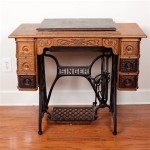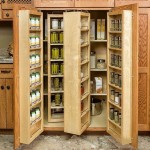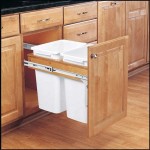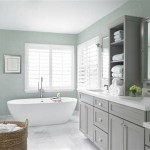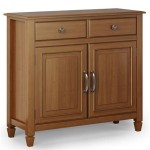Painting Racks for Cabinet Doors: Optimizing Efficiency and Quality
Painting cabinet doors is a common undertaking in both professional woodworking shops and for do-it-yourself home improvement enthusiasts. Achieving a flawless finish requires careful preparation, proper technique, and, crucially, the right tools. Among these tools, the painting rack designed specifically for cabinet doors stands out as a critical investment for efficiency, consistency, and overall quality.
Traditional methods of painting cabinet doors, such as laying them flat on a surface or propping them up against objects, often lead to imperfections. These imperfections can include pooling of paint, uneven drying, sticking to the work surface, and difficulties in achieving a consistent finish on all sides. A well-designed painting rack addresses these issues by providing a stable, elevated, and accessible platform for the painting process. This article will delve into the benefits of using painting racks for cabinet doors, exploring different types available, key considerations for choosing the right rack, and best practices for their use.
Enhanced Efficiency and Throughput
One of the primary benefits of using a painting rack is the increase in efficiency it provides. Compared to painting doors flat, a rack allows for all sides and edges of the door to be painted or coated with finishes in a single session without waiting for one side to dry entirely. This significantly reduces the overall turnaround time for a project. The doors are suspended, preventing them from sticking to a surface, which eliminates the need for flipping and repositioning constantly. The time saved translates to a higher throughput for professional shops, allowing them to complete more projects within a given timeframe. For DIYers, the reduced time commitment makes the project less daunting and more manageable.
The design of most painting racks allows for multiple doors to be painted simultaneously. Racks are typically designed to hold a specified number of doors securely, providing a systematic organized process. This streamlined approach minimizes handling and maximizes productivity. Furthermore, the consistent spacing between doors allows for even airflow, promoting uniform drying and reducing the risk of drips or sagging.
The organized nature of using a painting rack also aids in tracking progress. The painter can easily see which doors have been painted and which ones are still waiting. This visual overview reduces the chances of accidentally missing a door or applying an inconsistent number of coats. This streamlined approach leads to fewer errors, less rework, and faster completion of the entire cabinet painting project.
Improved Finish Quality and Consistency
Beyond efficiency, painting racks significantly contribute to the quality of the final finish. By suspending the doors, the racks prevent the occurrence of common imperfections such as paint pooling, sticking, and unwanted texture transfer from the work surface. This is particularly important when applying multiple coats of paint or clear coat, as each layer builds upon the previous one. Any flaws in the initial coat will be amplified in subsequent coats.
Raised racks allow for enhanced edge coverage. Edges and corners are often difficult areas to paint evenly, especially when the doors are laying flat. With a rack, the edges are fully exposed, allowing for easy application of the finish with a brush, roller, or sprayer. This results in a more professional, durable, and visually appealing final product.
Consistent drying is another key benefit. Uniform airflow around the suspended doors ensures that the paint dries evenly across the entire surface. This reduces the risk of variations in sheen or color, creating a more consistent and professional appearance. The consistent drying also minimizes the likelihood of cracking or peeling due to uneven expansion and contraction of the paint film.
Moreover, the controlled environment provided by a painting rack minimizes the risk of contamination. By keeping the doors elevated, the rack reduces the chances of dust, debris, or other contaminants settling on the wet paint. This is especially critical when using high-gloss finishes, which tend to highlight even the smallest imperfections. A clean and dust-free finish contributes to a more polished and professional outcome.
Types of Painting Racks and Key Considerations
Several types of painting racks are available on the market, each offering different features and benefits to suit various needs and preferences. Understanding the different types available is crucial for selecting the right rack for a specific project or workshop setup.
Horizontal Racks: Horizontal racks are typically designed to hold doors side-by-side, with each door resting on a pair of supports. These racks are ideal for maximizing space and are often used in professional workshops where space is limited. They are generally easy to load and unload, and they provide good stability for the doors. Some horizontal racks are adjustable to accommodate doors of different sizes. A drawback of horizontal racks can be the potential for slight sagging or bowing of the doors if they are left on the rack for extended periods, especially if the supports are not properly aligned or the doors are particularly heavy.
Vertical Racks: Vertical racks hold the doors upright, often utilizing a series of slots or pegs to support each door. These racks are very space-efficient and are often preferred for storing doors during the drying process. They are generally easy to move around, making them a good option for workshops with limited space or for on-site painting. However, vertical racks may be less stable than horizontal racks, and they can be more challenging to load and unload, especially with larger or heavier doors. It's also important to ensure proper spacing to prevent doors from rubbing against each other and damaging the finish.
Rotating Racks: Rotating racks feature a central pivot point that allows the rack to be rotated, providing easy access to all sides of the doors. This is particularly useful for applying multiple coats of paint or clear coat, as the painter can easily rotate the rack to reach all areas without having to reposition the doors. Rotating racks are often more expensive than horizontal or vertical racks, but they can significantly improve efficiency and reduce strain on the painter.
Mobile Racks: Mobile racks are equipped with casters or wheels, allowing them to be easily moved around the workshop. This is particularly useful for transporting doors between different workstations or for moving the rack to a well-ventilated area for drying. Mobile racks are typically heavier and more robust than stationary racks, and they may require more space for maneuvering. However, the added mobility can significantly improve workflow and reduce the risk of damaging the doors during transport.
When selecting a painting rack, several key factors should be considered. The size and weight capacity of the rack are important considerations, as they must be able to accommodate the largest and heaviest doors that are likely to be painted. The material of the rack is also important, as it should be durable and resistant to corrosion or damage from solvents or paints. Steel and powder-coated finishes are common options for durability. The stability of the rack is another critical factor, as it must be able to hold the doors securely without wobbling or tipping over. Finally, the ease of use and adjustability of the rack should be considered, as these factors can impact the overall efficiency and convenience of the painting process.
Beyond the type of rack, auxiliary features can further enhance the painting process. Some racks have adjustable door supports, allowing them to accommodate doors of different thicknesses. Others have built-in drip trays to catch excess paint and prevent it from dripping onto the floor. Some are even equipped with integrated spray booths to contain overspray and reduce the risk of contamination.
Ultimately, the choice of painting rack depends on the specific needs and preferences of the painter. Whether for a professional workshop or a DIY project, investing in a well-designed painting rack can significantly improve the efficiency, quality, and consistency of cabinet door painting.

Paint Drying Rack For Cabinet Doors Sawdust Girl

The Paintline Prodryingrack Kd 50 Shelf Cabinet Door Drying Rack

Paintline Prodryingrack Tt 20 Shelf Cabinet Door Drying Rack Paint Multi Tool Pdrtt At Lowes Com

How To Make Cabinet Drying Racks

Rockler Paintline Prodryingrack Tt Tabletop Drying Rack

Paint Drying Rack For Cabinet Doors

How To Build Your Own Cabinet Door Paint Spray Dry Rack Tuesdaytipswithfallon Market House Restorations

Prodryingrack Tt Pdrtt 20 Shelf Cabinet Door Drying Rack By Paintline Thepaintline Ca

Cabinet Door Drying Rack Rogue Engineer

Close Out Sale Rotating Spray 30 Cabinet Dry Rack Combo With Wheel Door Painter

